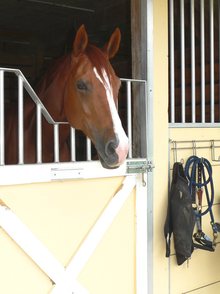The Colorado Department of Agriculture is continuing to investigate and monitor horses exposed to one horse with a confirmed case of Equine Herpes Virus (EHV-1) within the state; a Douglas County premises remains under quarantine. Strict bio-security and disease prevention practices have been instituted on the quarantined premises. This quarantine may be released in seven days if there are no additional horses showing clinical signs.

EHV-1 quarantine over in 7 days
Strict bio-security and disease prevention practices have been instituted on the quarantined premises.
Three facilities received horses from the same transport vehicle. Horses at those facilities remain free of clinical signs of EHV-1. The movement restrictions on these facilities will be released on May 22, 2012, as they have completed the 21-day observation time period.
Unlike the EHV-1 outbreak in 2011, the initial case in Colorado originated from an out-of-state stable where there have not been any other positive horses. To date, no other Colorado exposed horses have become ill with similar signs. With the exception of the initial case and contact horses’ premises the State Veterinarian is not recommending movement or event restrictions.
The State Veterinarian encourages horse owners and event managers to observe basic biosecurity practices such as limiting horse-to-horse contact, separating feeding, watering and tack supplies, and eliminating shared water sources at events to minimize transmission of all infectious diseases.
EHV-1 is not transmissible to people; it can be a serious disease of horses that can cause respiratory, neurologic disease and death. The most common way for EHV-1 to spread is by direct horse-to-horse contact. The virus can also spread through the air, contaminated tack and equipment, clothing and hands.
Symptoms include fever, decreased coordination, nasal discharge, urine dribbling, loss of tail tone, hind limb weakness, leaning against a wall or fence to maintain balance, lethargy, and the inability to rise. While there is no cure, the symptoms of the disease may be treatable and owners are encouraged to talk to their veterinarian about vaccine which can offer some level of protection against EHV-1.
Read more about EHV-1
